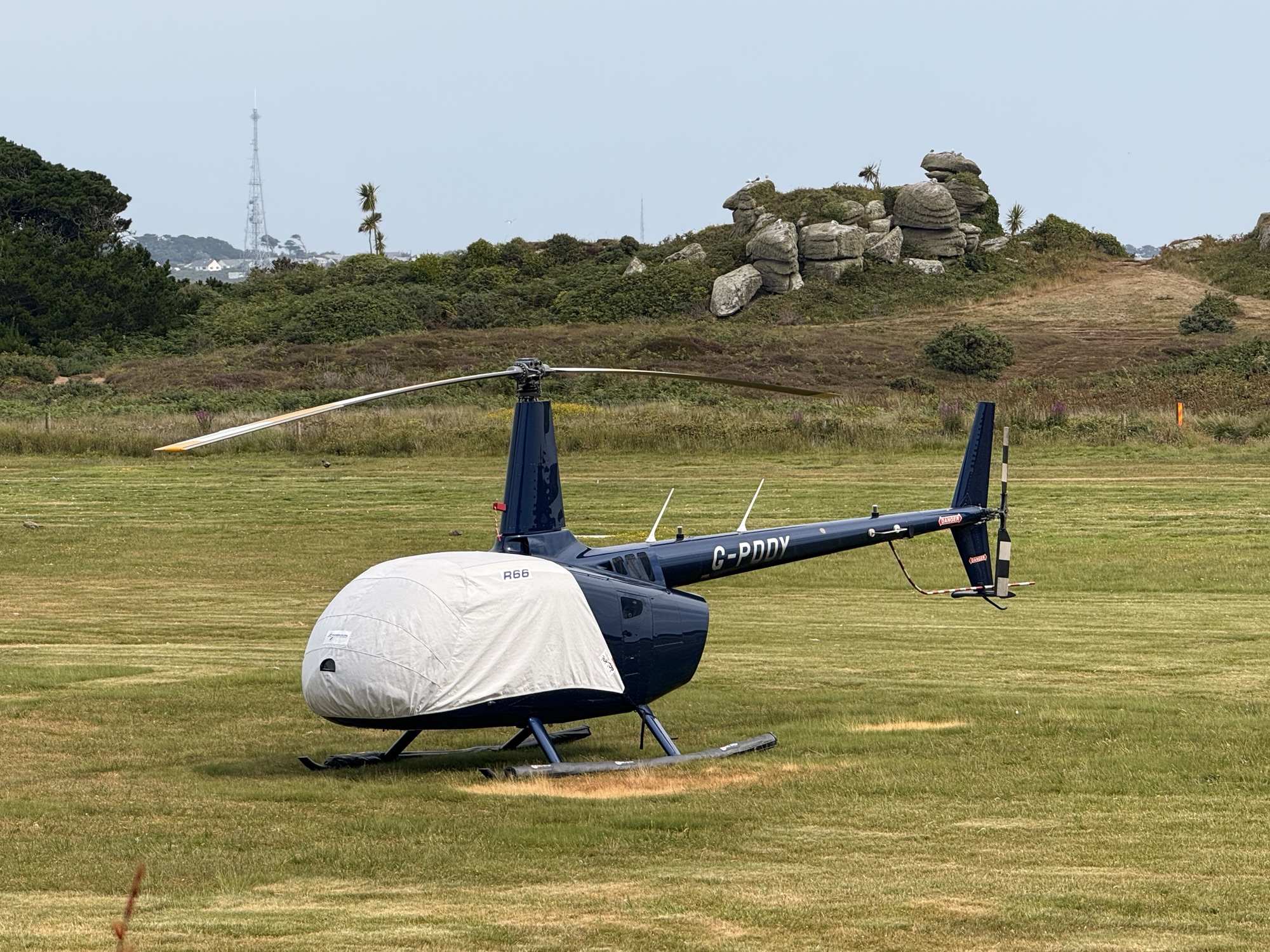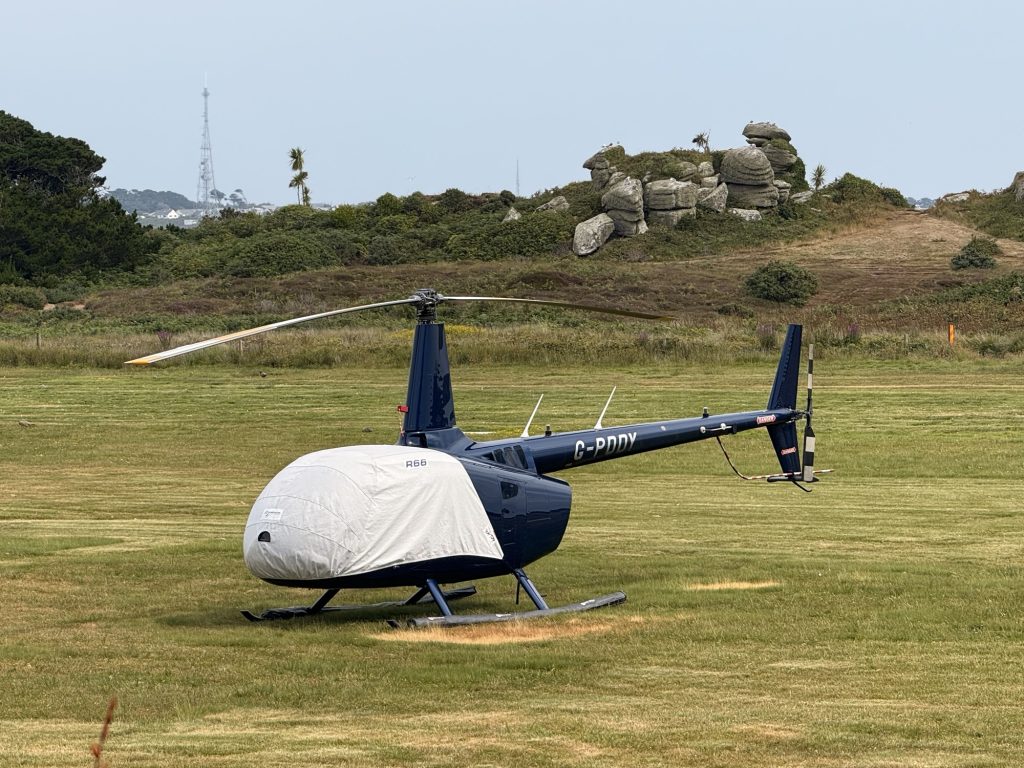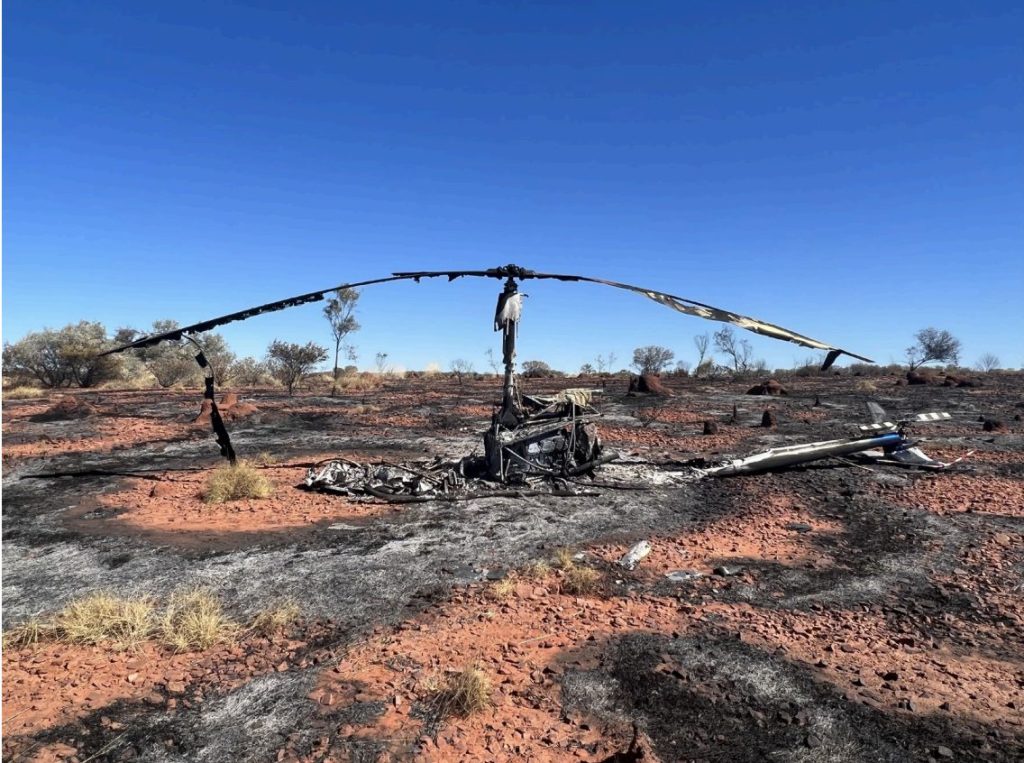Impact of Robinson Helicopters on Grass

Does it or doesn’t it leave a mark?
We did a little test in short grass with an R66 which you can see in the photos below. The heli was left overnight. The next day it was flown back to the same location, but slightly to the right. You can see the effect of 24 hours which is the bigger patch. Please comment if you have any differing evidence.

Unfortunately, in very dry conditions, grass can cause a fire, as shown in the photo below of an R44 in Alice Springs.

The ATSB in Australia has been notified of 5 occurrences since 2012 where a Robinson helicopter has been destroyed by grass fire, with many reports highlighting the speed with which the grass ignited and
the fire spread beyond control.
The Pilot’s Operating Handbook has a note in Section 10, Safety Tips stating: Do not land in tall dry grass. The exhaust is low to the ground and very hot; a grass fire may be ignited. The ground to muffler height on a new R44 is about 49 cm.
R66 Specifics
The RR300 exhaust is extremely hot. Normal start peaks are 800–850 °C MGT, showing the thermal regime you’re dealing with. Shutdown requires two minutes at idle. That hot plume, entrained by rotor downwash, impinges on the turf and cooks it. Browning often shows hours later.
Leaf tissue injury for temperate herbs begins around 40–45 °C with tens‑of‑minutes exposure; higher temps need less time, so brief hot plumes can still kill grass.
Robinson Safety Notice SN‑18 (reproduced in the R66 POH) documents grass‑fire risk from exhaust.
Factors that raise risk
Dry or tall grass obviously. Be aware of calm winds that recirculate exhaust, a long ground‑idle and repeated use of the same spot.
For landing site owners in mild climates, it is a minor issue unless it is a lawn. Laying down something on the grass (eg the helicopter nose cover), once shut down, might work (please comment if tested).



Yet another reason not to buy a Robinson!
Never use a nose cover or something similar which may get caught in rotor down wash when landing and blow up Into rotors Grass will recover within a few weeks do no permanent harm.
One landing and an overnight stay will never leave marks as shown above. The photo is a misrepresentation.